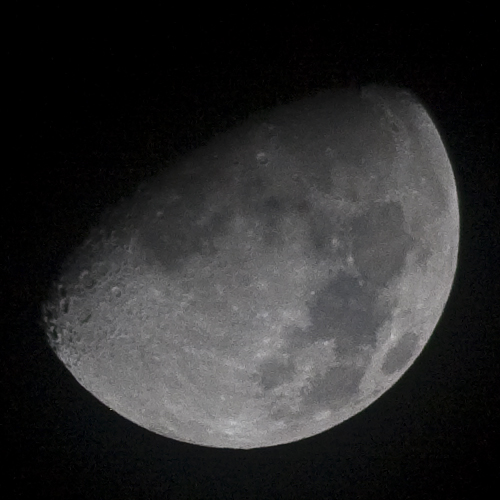Tonight was a nice clear night (for London) and after catching a glimpse of a +3.3 magnitude satellite, I decided I should get out my camera gear and experiment photographing the moon.
There are a couple of interesting points to keep in mind when photographing the moon:
The Moon isn’t as big as it appears (You need lots of zoom!)
My camera, a Canon EOS40D is 10.1 megapixels, outputting an image of 3888 x 2592 pixels. Using a 300mm zoom lens the moon will only take up 500×500 pixels, or 1/4 megapixels.
The Moon is surprisingly bright
It should be fairly easy with consumer equipment to get shutter speeds of around 1/200th of a second at F8 at a relatively low ISO speed (100 – 400). Remember if you are hand holding the camera at 300mm you really should have 1/400th of a second or faster to eliminate any shake.
A full moon is flat and boring
Forget all those romantic ideas you have about a full moon – It’s a particularly boring photography subject. A full moon is a full moon because it is lit front on from the sun. Craters will have no shadows and the moon will appear flat. The gibbous phases are particularly interesting due to strong side lighting showing the depth of craters in more detail.
I took around 80 photos of which only three were kept.
Here is my favourite:

This photo is a full size crop from the 10.1 megapixel image. Best results are achieved when using a lens of 600mm or greater.
